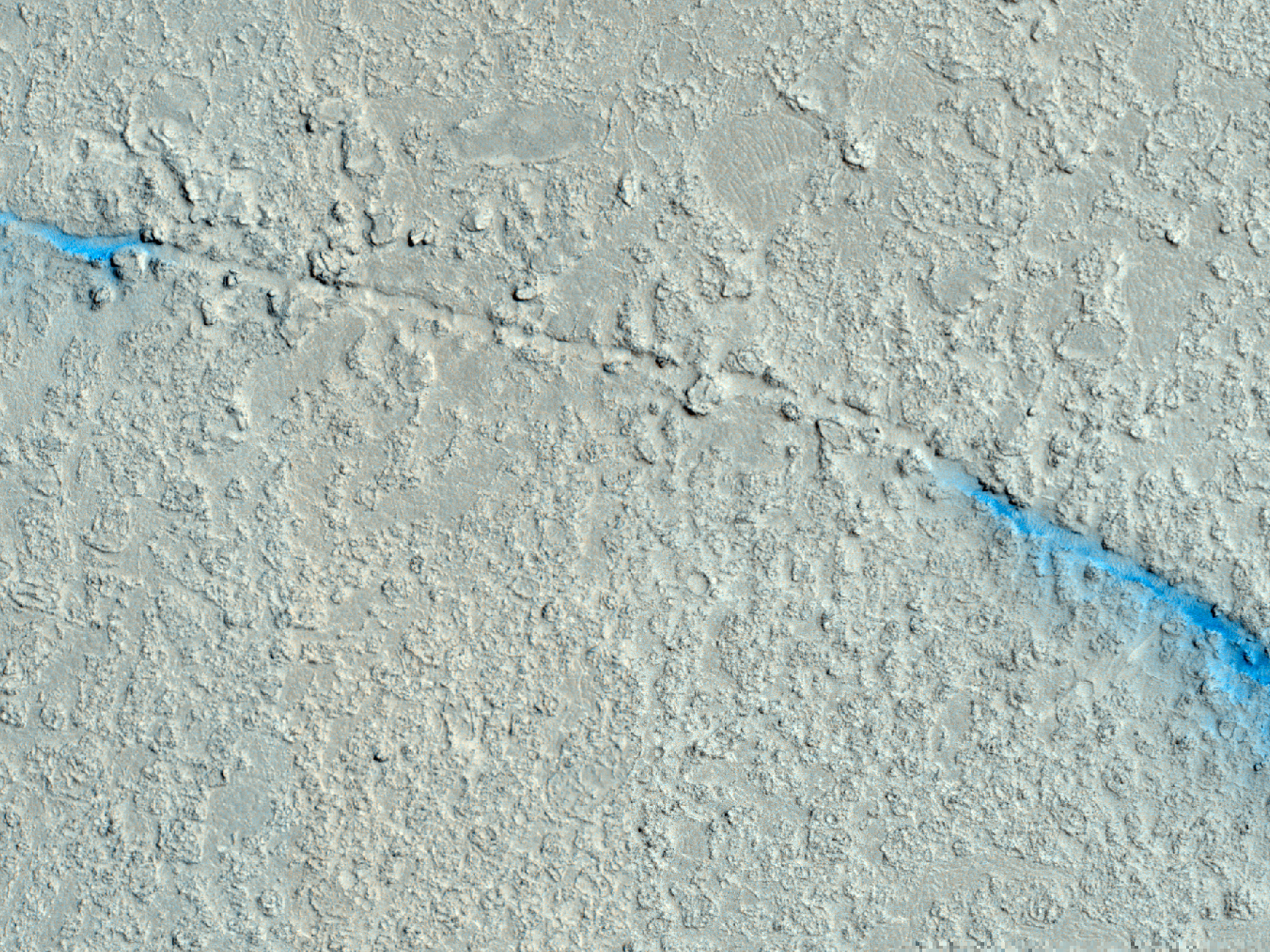Parts of this shallow fissure in the lava-filled Athabasca Valles are filled with dark, sandy material. The dark-toned (
bluish in the enhanced color image) material is considered relatively fresh, because it has not had time to become covered by the ubiquitous light-toned dust that blankets much of Mars’ surface.
It is not clear if this material is being captured in the deeper parts of the fissure as the wind blows across the flat terrain, or if the material is originating from the fissure itself. If it is coming from the fissure, that could indicate some kind of current activity or active erosion. Other clues in this image are small craters, some of which contain similar fresh sandy deposits, while others do not.
More evidence is needed to investigate the origin of the fresh deposits here, such as nearby patterns in windblown sediments, monitoring images at this location, or perhaps a topographic map of this scene to measure the depths of the fissure related to the locations of the deposits.
ID:
ESP_084722_1895date: 22 August 2024
altitude: 277 km
https://uahirise.org/hipod/ESP_084722_1895
NASA/JPL-Caltech/University of Arizona
#Mars #science #NASA
